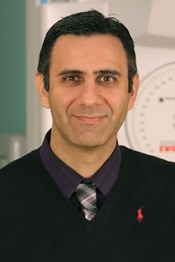Program Information
Determining the NTCP Parameters of Pharyngeal Constrictors and Proximal Esophagus for Radiation Induced Swallowing Problems Recorded Six Months After Radiation Therapy for Head and Neck Tumors
P Mavroidis1*, A Price1 , M Kostich1 , R Amdur2 , W Mendenhall2 , N Sheets3 , R Green1 , S Das1 , L Marks1 , B Chera1 , (1) University North Carolina, Chapel Hill, NC, (2) University of Florida, Gainesville, FL, (3) University of North Carolina, Raleigh, North Carolina
Presentations
SU-F-T-104 (Sunday, July 31, 2016) 3:00 PM - 6:00 PM Room: Exhibit Hall
Purpose: To estimate the radiobiological parameters of four NTCP models that describe the dose-response relations of pharyngeal constrictors and proximal esophagus regarding the severity of patient reported swallowing problems 6 months post chemo-radiotherapy. To identify the section/structure that best correlates with the manifestation of the clinical endpoints. Finally, to compare the goodness-of-fit of those models.
Methods: Forty-three patients were treated on a prospective multi-institutional phase II study for oropharyngeal squamous cell carcinoma. All the patients received 60 Gy IMRT and they reported symptoms using the novel patient reported outcome version of the CTCAE. We derived the individual patient dosimetric data of superior, medium and inferior sections of pharyngeal constrictors (SPC, MPC and IPC), superior and inferior sections of esophagus (SES and IES) as separate structures as well as combinations. The Lyman-Kutcher-Burman (LKB), Relative Seriality (RS), Logit and Relative Logit (RL) NTCP models were used to fit the patient data. The fitting of the different models was assessed through the area under the receiver operating characteristic curve (AUC) and the Odds Ratio methods.
Results: The AUC values were highest for the SPC for Grade ≥ 2 (0.719 for the RS and RL models, and 0.716 for LKB and Logit). For Grade ≥ 1, the respective values were 0.699 for RS, LKB and Logit and 0.676 for RL. For MPC the AUC values varied between 0.463-0.477, for IPC between 0.396-0.458, for SES between 0.556-0.613 and for IES between 0.410-0.519. The Odds Ratio for the SPC was 15.6 (1.7-146.4) for RS, LKB and Logit for NTCP of 55%.
Conclusion: All the examined NTCP models could fit the clinical data with similar accuracy. The SPC appear to correlate best with the clinical endpoints of swallowing problems. A prospective study could establish the use of NTCP values of SPC as a constraint in treatment planning.
Contact Email:

